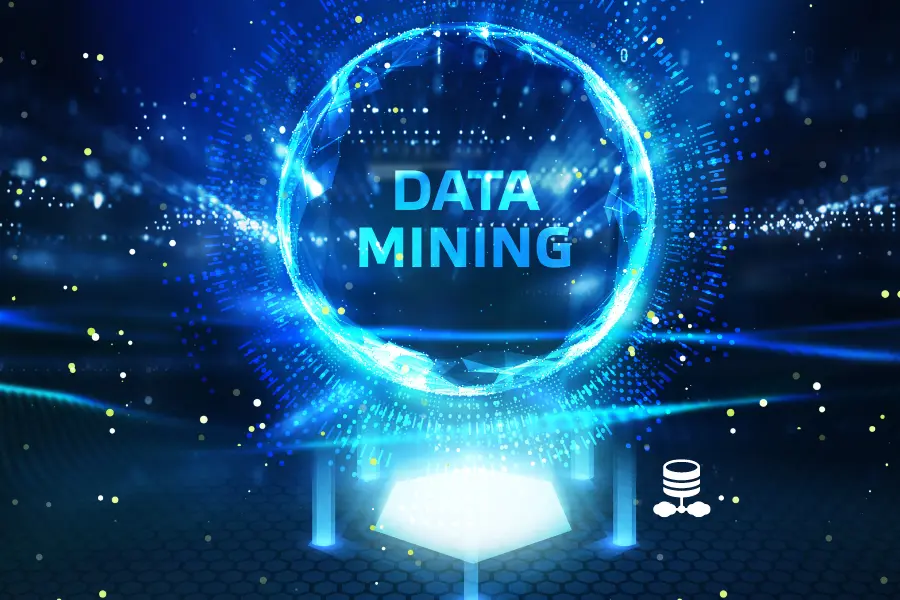Advanced Data Mining Techniques
Data mining plays a crucial role in data science by identifying patterns, correlations, irregularities, and insights within extensive datasets. This process involves analysing large volumes of data to discover hidden information, trends, and relationships that can inform data-driven decisions, forecast future outcomes, and address complex problems. It is a fundamental aspect of data science, which also encompasses machine learning, statistics, and domain expertise. In essence, data mining is essential to data science in applying techniques that extract significant knowledge from data, thereby enhancing predictive models, guiding strategic decisions, and solving specific challenges across various domains.

Advanced data mining techniques involve advanced methodologies and algorithms that go beyond traditional approaches to display deeper insights from complex datasets. Here are some advanced techniques:
1. Deep Learning
Deep learning is a subset of machine learning where neural networks with many layers (deep architectures) learn to represent complex patterns in data. These networks are adept at tasks such as image recognition, natural language processing, and speech recognition. For instance, Convolutional Neural Networks (CNNs) excel in analysing visual data like images, while Recurrent Neural Networks (RNNs) are effective for processing sequential data like time series and text.
2. Natural Language Processing (NLP)
Natural Language Processing involves the analysis, understanding, and generation of human language by computers. It encompasses a range of techniques to process and analyse text data, such as sentiment analysis, entity recognition, and text summarization. NLP techniques are widely used in applications like language translation, chatbots, and text mining for extracting insights from large volumes of text data.
3. Model Collaboration
Model collaboration methods combine multiple individual models to improve predictive accuracy. By aggregating the predictions of diverse models, collaboration methods often outperform individual models. For instance, Random Forests aggregate the predictions of multiple decision trees, while Gradient Boosting Machines (GBMs) sequentially build a series of weak learners to correct errors made by previous models.
4. Rule-Based Mining
Rule-based mining uncovers interesting relationships between variables in large datasets. It's commonly used in market basket analysis to identify item set associations in transaction data. The Apriori algorithm, a well-known association rule learning technique, generates rules based on the frequency of itemsets in the data.
5. Anomaly Detection
Anomaly detection, also known as outlier detection, identifies rare and unusual patterns in data that deviate significantly from the norm. Anomalies can indicate potential fraud, errors, or interesting insights. Techniques like Isolation Forests and Auto encoders are advanced methods for detecting irregularities in datasets.
6. Support Vector Machines (SVM)
SVM is a powerful supervised learning algorithm used for classification and regression tasks. It finds the optimal hyperplane that best separates different classes in a high-dimensional space. SVMs are particularly effective when dealing with high-dimensional data, making them suitable for tasks like text classification, image recognition, and bioinformatics.
7. Dimensionality Reduction
Dimensionality reduction techniques aim to reduce the number of features in a dataset while preserving its essential information. This simplifies models, reduces computational complexity, and aids in visualising high-dimensional data. Popular methods like Principal Component Analysis (PCA) and t-distributed Stochastic Neighbour Embedding (t-SNE) are used for dimensionality reduction.
8. Clustering Algorithms
Clustering algorithms group similar data points together based on their characteristics or features. They are unsupervised learning techniques that identify natural groupings within data. For instance, DBSCAN can identify clusters of arbitrary shapes in data, while Hierarchical Clustering builds a hierarchy of clusters based on similarity.
9. Genetic Algorithms
Genetic Algorithms (GAs) are optimisation algorithms inspired by the process of natural selection and evolution. They iteratively evolve a population of candidate solutions using genetic operators such as mutation, crossover, and selection to find the best solution to a problem. Genetic algorithms are used in various optimization problems, including feature selection, parameter optimization, and scheduling.
10. Graph Mining
Graph mining involves analysing data represented as graphs or networks. Graph mining techniques aim to uncover patterns, structures, and relationships within graph-structured data. This includes algorithms for community detection, centrality analysis, and link prediction. Graph mining finds applications in social network analysis, recommendation systems, and biological network analysis.
These advanced data mining techniques represent just a fraction of the diverse range of methodologies and algorithms available for extracting valuable insights from complex datasets. Each technique has its strengths and weaknesses, and the choice of technique depends on the nature of the data, the specific problem being addressed, and the goals of the analysis. In the future, a lot of innovations and techniques will come into play which will help leverage the data sets.
Future Directions
The future of data mining holds exciting advancements, including the integration of AI and quantum computing to enhance processing capabilities, the development of explainable AI for greater transparency, improvements in real-time data mining for immediate analysis, and the emphasis on ethical data mining practices to ensure fairness and privacy. Additionally, interdisciplinary approaches and enhanced human-AI collaboration will further drive innovation, making advanced analytics accessible to a broader audience and enabling more effective decision-making across various fields.
Advances in augmented analytics will automate data preparation and insight generation, standardising data science and empowering non-experts to get meaningful insights. As data continues to grow in volume and complexity, these future directions will ensure that data mining remains a critical tool for extracting valuable knowledge and driving progress in diverse industries.
Active Events
Your Data Science Career Game-Changing in 2024: Explore Trends and Opportunities
Date: Feburary 28, 2025 | 7:00 PM (IST)
7:00 PM (IST) - 8:10 PM (IST)
2811 people have registered
Data Scientist Challenges One Should Avoid
Date: Feburary 25, 2025 | 7:00 PM (IST)
7:00 PM (IST) - 8:10 PM (IST)
2753 people have registered
Bootcamps
Data Science Bootcamp
- Duration:8 weeks
- Start Date:October 5, 2024
Full Stack Software Development Bootcamp
- Duration:8 weeks
- Start Date:October 5, 2024
